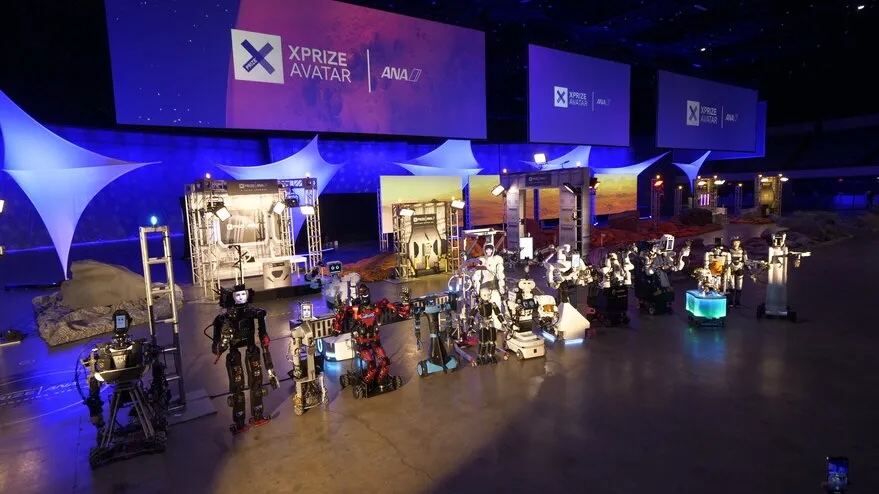
June 04, 2024
FUZZY LOGIC: What the National Institutes of Health Can Learn from the 3 Body Problem
Using challenge awards can speed up the rate of problem-solving, leverage compelling incentives, and more efficiently expend finite resources.
TL;DR
- Challenge awards promote innovation when they attempt to mimic competitive battlefield conditions.
- Governmental agencies, private industry, and NGOs can use challenge awards to spur innovation and problem-solving to different ends.
- Challenge competitions have world-changing possibilities and leverage human incentives more efficiently than other funding models.
Netflix’s “3 Body Problem” is a new sci-fi series by David Benioff and D. B. Weiss (the creators of “Game of Thrones”). It touches on themes of virtual reality, extending life, and, naturally, battling space aliens hellbent on destroying humanity. Its unlikely protagonists are neither war heroes nor tech billionaires (both of whom are featured as secondary characters) but rather physicists brainstorming solutions to existential threats on whiteboards.
Understanding innovation is a recurring conversation topic for Thomas Wade, head of the shadowy, unnamed government organization tasked with saving the world, headquartered in a 17th-century English country house (nice work if you can get it). Wade’s pithy insights about the process of innovation are entertaining one-liners that pepper the dialogue of several episodes:
“The engineers I have are the most accomplished in the world, but they’re all fixated on feasibility. ‘Everything is limited. Nothing is possible.’ Here’s my challenge to you: Find me a way to get a probe to 1% light speed or faster, utilizing existing technology.”
3 Body Problem, S1E6
The protagonist physicist, Dr. Jin Cheng, cites history as inspiration for innovation:
“During the Ming Dynasty, the Chinese Navy built a gunpowder rocket with smaller missiles stored inside. The result was a medieval weapon that caused 20th-century damage. So there is already a precedent for achieving advanced results using current materials.”
3 Body Problem, S1E6
But we also learn another lesson from Dr. Cheng about the division of labor and the importance of specialization:
“Our job is to come up with a solution to a scientific problem. It’s someone else’s job to come up with the money, and there’s no version of this that doesn’t require a lot of money. I agree, the margin for error is small. But it’s not impossible.”
3 Body Problem, S1E6
With these quotes, we can understand why many modern rapid technological advances, from aeronautics to polymers to telecommunications, are a result of a “collective war effort.” It is because the specialist is free to solve a problem in their domain. Their job is not to consider any imaginary roadblocks–it is to solve the problem or meet the goal by any means necessary. If they are able to make the solution work, then the political will and financial assistance to implement the solution follows.
The question is, how can countries and private industry mimic the life-altering innovation that comes with the urgency and crisis of battlefield conditions during peacetime? Government and industry have often supported the creation of new and useful technologies by sponsoring “challenge competitions.” Below, I discuss how following the example of the 3 Body Problem by funding more competitions and challenge awards can induce more creative problem-solving.
Organizations like the NIH would benefit from depending more heavily on a challenge competition model for problems. The current grant structure of research funding has been exploited by research fraud and can come with creativity-limiting strings attached. Structuring competitions with clear “calls for innovation” and providing government-funded and free market rewards for successful solutions would go a long way in optimizing resources. These competitions have the potential to start as a solution to an existing goal or problem and change the world as we know it.
Competition to spark innovation is not a new or original idea. It has been used as an alternative to war since before medieval knights were jousting in tournaments. Today, government agencies routinely induce creative innovation through competition (DARPA’s Autonomous Vehicle Races and Robotics Challenge). To quote the agency, “The results of the [DARPA Robotics Challenge] Finals will give DARPA, DoD, and industry a preview of what is possible with robots.”
There is a lot of debate on the internet about what the “3 Body Problem” got right or wrong. While the Netflix series treats the limited role of NGOs as glorified fundraising organizations pandering to billionaires, non-governmental organizations have historically been more integral to innovation than that. For more than a century, NGOs and private industry have offered sizable challenge awards to push the spirit of innovation and advance industries.
Challenger awards are generally created to spur innovation when existing financial incentives are not sufficient to propel the industry forward. For example, in 1996, when the original XPrize challenge began, the private space industry was nearly nonexistent. Offering a $10 million prize spurred the development of low-cost spaceflight and commercial space tourism. While challenge awards help us turn science fiction into reality, we can use the same mechanism to solve problems that science fiction didn’t predict or to keep ourselves from turning into a dystopian future.
In future articles, I will present how calls for innovation from government entities, private companies, and NGOs alike can best leverage what I’ve identified as four innovation archetypes. To have the best results, competition creators should be mindful of the problem they are trying to solve and adapt their calls based on defined inputs and knowledge types. Competitions that mimic the urgency and pressure of battlefields have the potential to leverage the human spirit, free market rewards, and finite resources like time and money more efficiently than other funding models.
Photo Credit: XPrize Foundation
Ezra Butler is a Senior Research Fellow at the Data Catalyst Institute.

